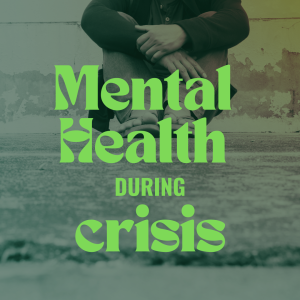Introduction
In many faith-based communities, mental health struggles are often met with a well-intentioned but overly simplistic prescription: “Just pray about it.” While spiritual practices such as prayer, fasting, and worship offer comfort and a sense of connection to a higher power, they may not always be sufficient to address complex psychological conditions such as depression, anxiety, trauma, or suicidal ideation. For deeply religious individuals, seeking professional mental health care can be accompanied by internal conflict, guilt, or fear of being perceived as lacking faith (Martínez de Pisón, 2022; Smith & Johnson, 2023). This guilt is often rooted in misinterpretations of religious teachings that equate emotional suffering with spiritual weakness or sin (Schaap-Jonker, 2022).
However, emerging research increasingly highlights that spirituality and psychological care are not mutually exclusive but rather complementary dimensions of holistic well-being (Koenig, 2011; Johnson & Emmons, 2023). Just as believers seek medical help for physical illnesses, reaching out for mental health support should be recognized as an act of self-stewardship rather than faithlessness. In fact, integrating one’s religious values into therapy has been shown to improve treatment outcomes, reduce stigma, and foster long-term resilience (Stanford & Philpott, 2024). This article explores the tension between faith and therapy, confronts the guilt that often arises when prayer seems insufficient, and promotes a model of mental health that honors both spiritual and clinical paths to healing.
If I Have Faith, Why Do I Still Feel Broken?
For many individuals of faith, mental health struggles can create a profound spiritual conflict. They may ask themselves: If I truly trust in God, why am I still anxious, depressed, or overwhelmed? This inner turmoil often stems from a deeply held belief that faith alone should be sufficient to overcome suffering. As a result, turning to therapy or psychiatric care may feel like a betrayal of spiritual convictions or an admission of spiritual failure (Martínez de Pisón, 2022).
Religious teachings, when misinterpreted or presented without nuance, can exacerbate this guilt. Messages that emphasize joy, peace, and victory in Christ may leave little room for acknowledging mental pain or emotional weakness. In some traditions, mental illness may even be stigmatized as a lack of faith, demon possession, or punishment for sin (Smith & Johnson, 2023; Schaap-Jonker, 2022). This contributes to a cycle of self-condemnation where the individual not only suffers from the condition itself but also from the shame of having it.
Furthermore, many faith-based communities prioritize spiritual resilience while overlooking emotional vulnerability. As Schaap-Jonker (2022) notes, unresolved guilt and shame common in many religious narrative can deepen psychological distress if not addressed compassionately. Without open conversations about mental health within religious circles, believers may internalize their struggles, avoiding help out of fear of judgment or spiritual rejection.
Yet, the truth is that faith and fragility are not mutually exclusive. Just as believers can experience physical illness while remaining spiritually strong, they can also encounter emotional struggles without losing their faith. As Stanford and Philpott (2024) argue, acknowledging one’s mental health challenges should not be seen as spiritual weakness but as a courageous act of seeking healing. When religious communities begin to embrace this truth, the stigma around therapy begins to dissolve.
You Can Have Jesus and a Therapist
Contrary to long-held misconceptions, faith and therapy are not mutually exclusive. In fact, numerous studies have demonstrated that integrating spiritual beliefs into psychotherapy can enhance healing and promote sustained mental well-being (Koenig, 2011; Johnson & Emmons, 2023). The idea that one must choose between prayer and professional help creates a false dichotomy one that denies individuals the full spectrum of support available to them. As the popular phrase affirms: “You can have Jesus and a therapist.”
Spirituality can serve as a profound source of strength, identity, and resilience, especially in times of crisis. For many people of faith, religious practices such as prayer, scripture reading, or communal worship provide emotional regulation, hope, and a sense of purpose (Galanter et al., 2022). However, these spiritual tools can and should coexist with psychological interventions. Therapy offers evidence-based techniques for managing symptoms, processing trauma, and developing coping strategies that spiritual practices alone may not fully address.
Research also indicates that culturally sensitive therapy that respects a client’s religious worldview leads to more effective treatment outcomes (Stanford & Philpott, 2024; Worthington et al., 2021). Clinicians who understand the spiritual language and values of their clients can help bridge the gap between faith and mental health, affirming that seeking help is an act of courage and not a lack of trust in God.
In Nigeria and many parts of Africa, the church often functions as both a spiritual and social lifeline. When pastors and congregations begin to normalize mental health conversations, such as endorsing therapy alongside prayer, they reduce stigma and create supportive pathways for healing. This integrated approach reinforces the idea that mental health care is not a contradiction of faith, but a complement to it.
The Preaching Podium Can Normalize Mental Health Conversations
Religious leaders and faith communities are uniquely positioned to influence perceptions and behaviours around mental health, especially in deeply spiritual societies like Nigeria. The pulpit is more than a place of sermon delivery; it’s a platform of authority, influence, and trust. When pastors, imams, and other spiritual leaders use their voices to normalize mental health struggles and encourage help-seeking behaviour, they play a powerful role in dismantling stigma (Stanford & Philpott, 2024; Wang et al., 2020).
Many congregants view their faith leaders as first responders in times of emotional crisis. However, some religious leaders, due to a lack of training or awareness, may unintentionally spiritualize mental illness, reducing complex psychological conditions to issues of sin, weak faith, or demonic attack (Gureje et al., 2015). This not only delays access to appropriate care but also reinforces feelings of shame and isolation. By receiving mental health literacy training and partnering with mental health professionals, clergy can provide more accurate guidance while respecting both spiritual and clinical perspectives.
Faith communities themselves can be healing spaces. They offer connection, purpose, and collective support that is protective against loneliness and despair (Koenig, 2011; Galanter et al., 2022). Incorporating mental health education into church programs, youth ministries, and women’s fellowships can further promote early intervention and emotional resilience. Some faith-based organizations have even begun hosting support groups, inviting therapists to speak at events, and building referral systems to trusted professionals, a model that bridges sacred spaces with mental health care.
When religious leaders openly share stories of their own struggles or acknowledge mental health from the pulpit, they humanize the experience and give permission for others to do the same. In doing so, they not only foster a more compassionate faith culture but also become agents of healing and hope.
Healing Begins When Silence Breaks
Stigma remains one of the most persistent barriers preventing people of faith from seeking mental health support. Often rooted in cultural norms, theological misinterpretations, and fear of judgment, this stigma can silence suffering and worsen emotional distress. In many religious communities, admitting to depression, anxiety, or trauma may be wrongly perceived as a spiritual failure or a lack of faith (Gureje et al., 2015; Schaap-Jonker, 2022). This toxic silence creates a dangerous space where shame thrives and healing is delayed.
But healing begins when silence breaks. Taking the first step, whether that means opening up to a trusted friend, speaking to a religious leader, or reaching out to a therapist, requires courage, not weakness. The decision to seek help does not mean abandoning faith; rather, it reflects a deeper trust that God can work through people, professionals, and processes to bring about restoration.
Education is also a powerful tool for breaking down stigma. Faith-based mental health awareness campaigns, church-hosted seminars, and testimonies from believers who have benefited from therapy can shift perceptions within the community. These efforts help reframe mental illness not as a moral or spiritual defect, but as a health issue that deserves compassion, care, and competent treatment.
Importantly, this journey doesn’t have to start with a crisis. Just like we engage in physical checkups, mental health check-ins can be proactive steps toward well-being. And when faith leaders lead the charge, by affirming therapy, referring members to professionals, or even attending therapy themselves, it sets a precedent: it’s okay to need help.
Overcoming stigma is a communal effort. As more individuals speak out and as more faith communities embrace mental health support without judgment, a new culture emerges, one where faith and therapy coexist and where healing is seen as holistic, encompassing body, mind, and spirit.
Conclusion
Faith and Therapy Can Walk Together
Mental health struggles do not disqualify one’s faith, nor does seeking therapy diminish one’s spirituality. In fact, the two can and should complement each other. As this article has explored, balancing faith with mental health care involves understanding the roots of guilt, confronting stigma, and embracing the idea that healing can come through both spiritual and psychological pathways.
Religious leaders and faith communities have an essential role to play in this integration. By fostering supportive environments, encouraging open conversations, and partnering with mental health professionals, they can help believers see that acknowledging emotional struggles is not a sign of spiritual weakness but an act of wisdom and strength.
Ultimately, faith can provide hope, meaning, and a foundation of trust in the healing process while therapy offers the tools, guidance, and support needed to walk through that process. For many, it is not a matter of choosing one over the other, but understanding that you can have Jesus and a therapist, and be better for it.
Let the message be clear; It’s okay to pray and still need help.
Healing is holy, and reaching out is brave.


